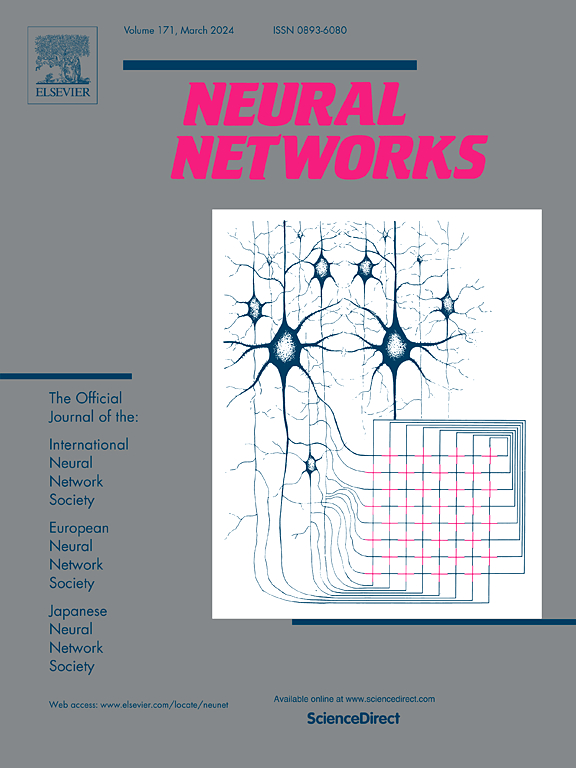Driving scene image Dehazing model based on multi-branch and multi-scale feature fusion
IF 6
1区 计算机科学
Q1 COMPUTER SCIENCE, ARTIFICIAL INTELLIGENCE
引用次数: 0
Abstract
Image dehazing is critical for enhancing image quality in applications such as autonomous driving, surveillance, and remote sensing. This paper presents an innovative image dehazing model based on a multi-branch and multi-scale feature fusion network that leverages spatial and frequency information. The model features a multi-branch architecture that combines local and global features through depthwise separable convolutions and state space models, effectively capturing both detailed and comprehensive information to improve dehazing performance. Additionally, a specialized module integrates spatial and frequency domain information by utilizing convolutional layers and Fourier transforms, enabling comprehensive haze removal through the fusion of these two domains. A feature fusion mechanism incorporates channel attention and residual connections, dynamically adjusting the importance of different channel features while preserving the global structural information of the input image. Furthermore, this is the first model to combine Mamba and convolution layers for driving scene image dehazing, achieving global feature extraction with linear complexity. Each image is processed in only 0.030 s, with a frame rate of 32.41 FPS and a processing efficiency of 67.96 MPx/s, ensuring high efficiency suitable for real-time applications. Extensive experiments on real-world foggy driving scene datasets demonstrate the superior performance of the proposed method, providing reliable visual perception capabilities and significantly improving adaptability and robustness in complex environments.
基于多分支多尺度特征融合的驾驶场景图像去雾模型
在自动驾驶、监视和遥感等应用中,图像去雾对于提高图像质量至关重要。提出了一种利用空间和频率信息的多分支多尺度特征融合网络的图像去雾模型。该模型采用多分支结构,通过深度可分卷积和状态空间模型结合局部和全局特征,有效地捕获了详细和全面的信息,提高了除雾性能。此外,一个专门的模块通过利用卷积层和傅里叶变换集成空间和频域信息,通过这两个域的融合实现全面的雾霾去除。特征融合机制结合通道关注和残差连接,在保持输入图像整体结构信息的同时,动态调整不同通道特征的重要性。此外,这是第一个将Mamba层和卷积层结合起来驱动场景图像去雾的模型,实现了具有线性复杂度的全局特征提取。每张图像的处理时间仅为0.030 s,帧率为32.41 FPS,处理效率为67.96 MPx/s,确保了适合实时应用的高效率。在真实雾天驾驶场景数据集上的大量实验证明了该方法的优越性能,提供了可靠的视觉感知能力,并显著提高了复杂环境下的适应性和鲁棒性。
本文章由计算机程序翻译,如有差异,请以英文原文为准。
求助全文
约1分钟内获得全文
求助全文
来源期刊

Neural Networks
工程技术-计算机:人工智能
CiteScore
13.90
自引率
7.70%
发文量
425
审稿时长
67 days
期刊介绍:
Neural Networks is a platform that aims to foster an international community of scholars and practitioners interested in neural networks, deep learning, and other approaches to artificial intelligence and machine learning. Our journal invites submissions covering various aspects of neural networks research, from computational neuroscience and cognitive modeling to mathematical analyses and engineering applications. By providing a forum for interdisciplinary discussions between biology and technology, we aim to encourage the development of biologically-inspired artificial intelligence.
 求助内容:
求助内容: 应助结果提醒方式:
应助结果提醒方式:


